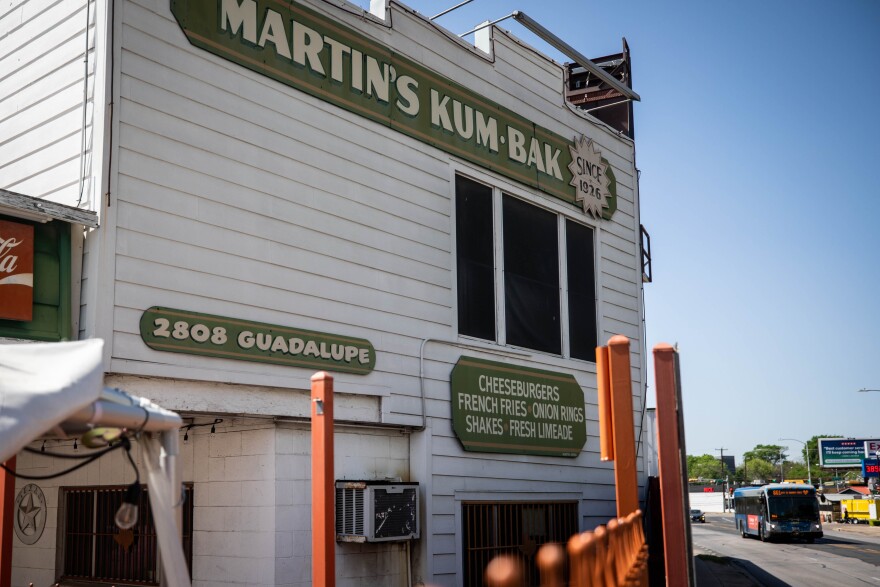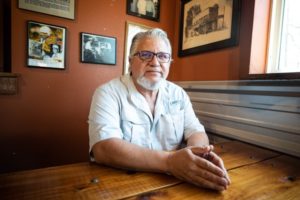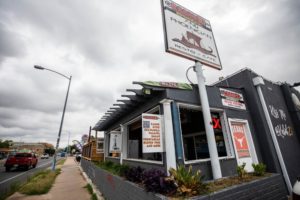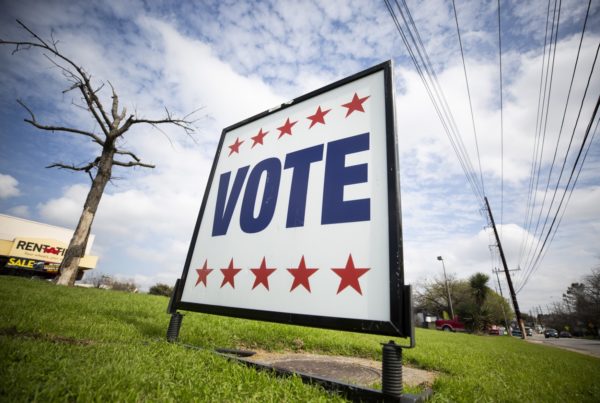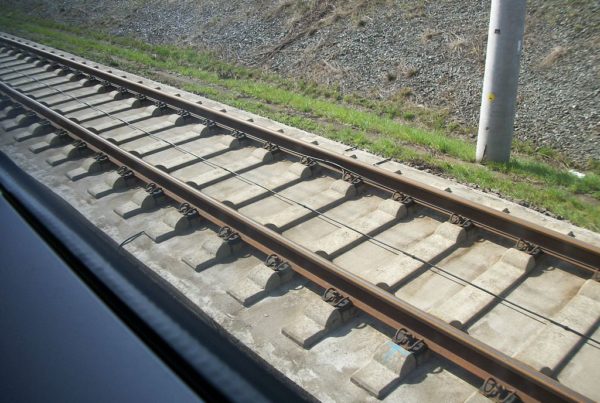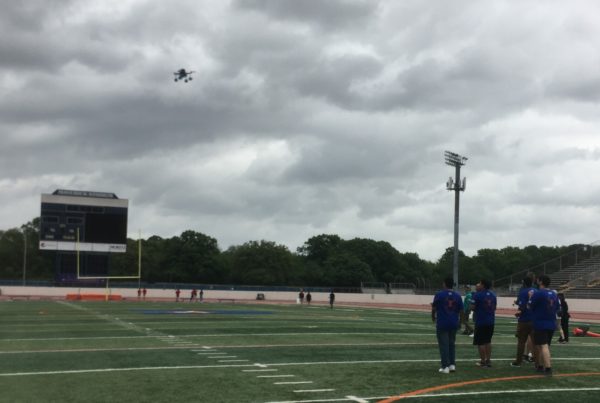From KUT:
When Austin voters approved the largest expansion of public transit in the city’s history, they signed up for higher property taxes to help pay for it. But now another cost of Project Connect is coming into focus: the loss of local businesses in the path of a light-rail line.
One of the most eye-popping transformations of the streetscape is planned for Guadalupe Street between 27th and 29th streets. About a dozen businesses could be displaced, including one of Austin’s most famous burger joints.
Dirty Martin’s has served up hamburgers at Guadalupe and Nueces for almost a century. Owner Mark Nemir has been in charge the last 33 years.
“Where would you relocate a business that’s been by the University of Texas campus for 96 years? You’d have to start a whole other history,” Nemir said when asked if would accept a government compensation package to relocate his business. “I’m not an economist or a genius. I’m just a hamburger salesman.”
Long-time customers have rallied around the business. Preservation Austin dug into the building’s history in a piece published last month. An online petition calling for the light-rail line to be rerouted around Dirty’s has more than 13,000 signatures.
“I do see the need for upgraded infrastructure. I do believe that it’s long past due,” said Rowena Houghton Dasch, executive director of the nearby Neill-Cochran House Museum and a resident of the neighborhood. “But I also feel like we as a city are watching piece by piece the history fabric of the city be deconstructed, and this is one more brick that’s being removed.”
Not just Dirty’s
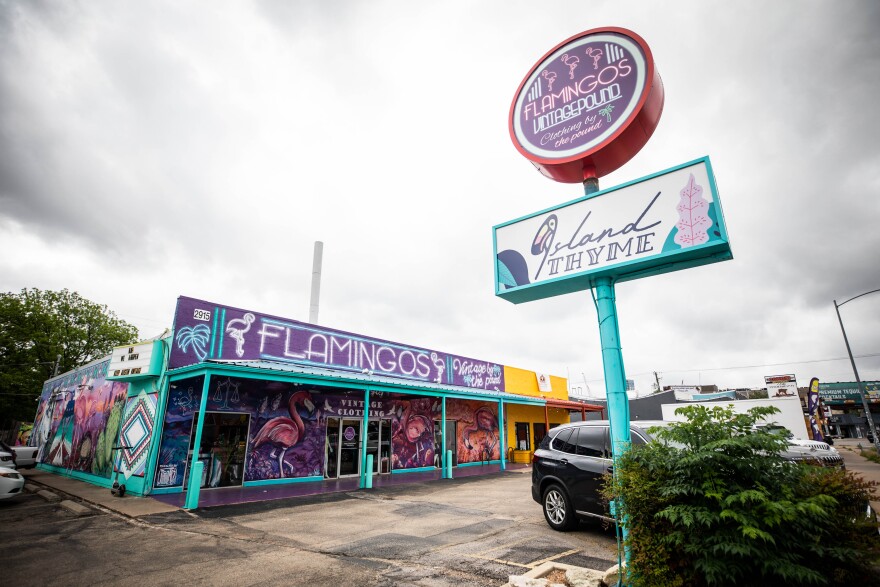
Flamingos vintage shop is among the dozen or so businesses that would be displaced by the Orange Line plans around Guadalupe Street.
Michael Minasi / KUT
Dirty Martin’s is the oldest of about a dozen businesses that would be razed by Project Connect plans for the Orange Line, a light-rail route from Stassney Lane to the North Lamar Transit Center.
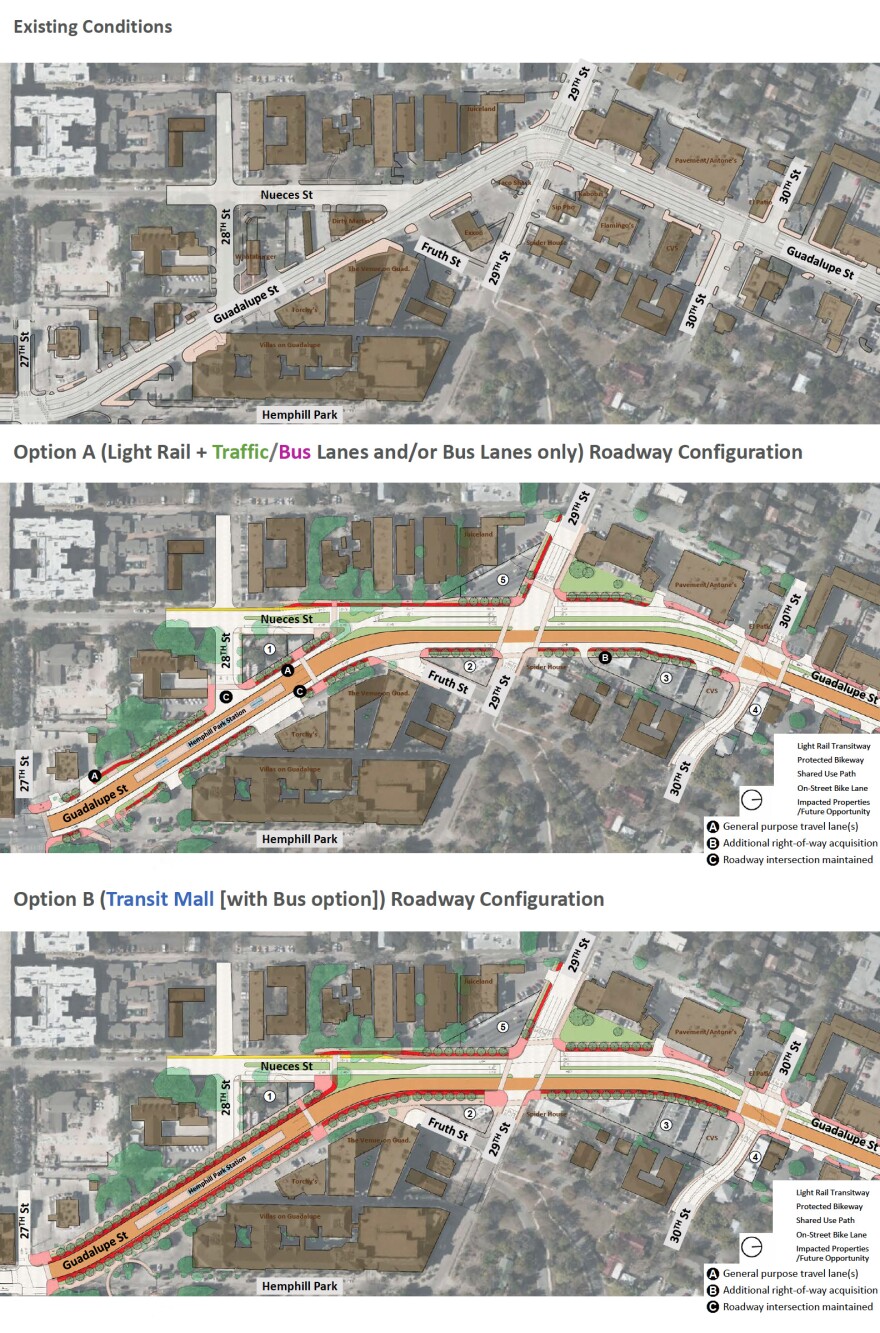 Other businesses that would be displaced include:
Other businesses that would be displaced include:
- Halal Bros
- The Ballroom at Spiderhouse
- CRU Lounge
- Whataburger
- Exxon
- Taco Shack
- Sip Pho
- Flamingos Vintage Pound
- Phoenician Resto Cafe
- Campus Hookah Lounge
- Tasty’s Tacos (“Coming Soon,” according to sign on the window)
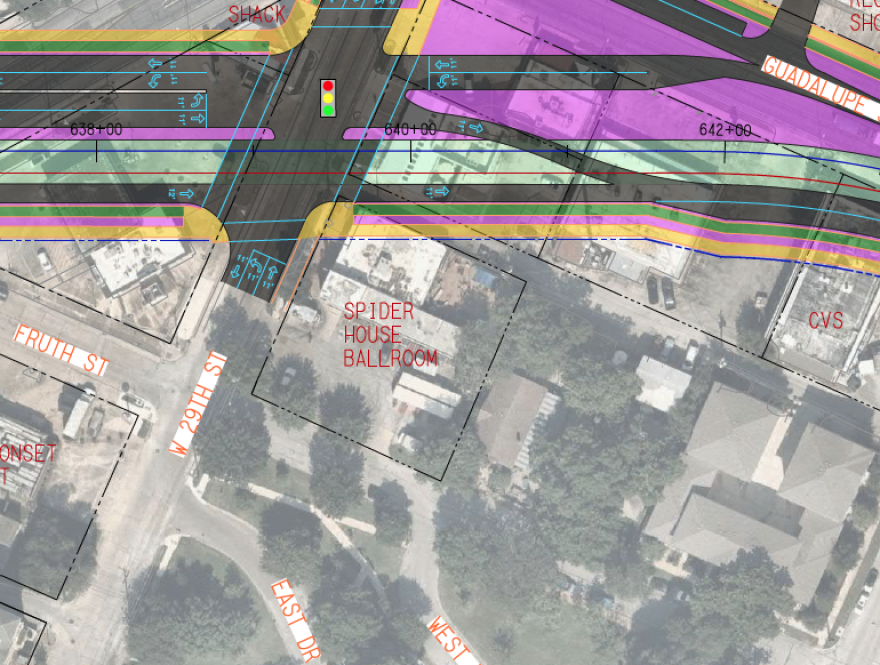
ATP’s early schematics show how the Orange Line would cut into The Ballroom at Spiderhouse.
Austin Transit Partnership
Of three burger restaurants on Guadalupe between 27th and 29th streets, In-N-Out would be the only one to escape demolition under the Austin Transit Partnership’s early designs. The California-based chain would lose a chunk of its parking lot, however.
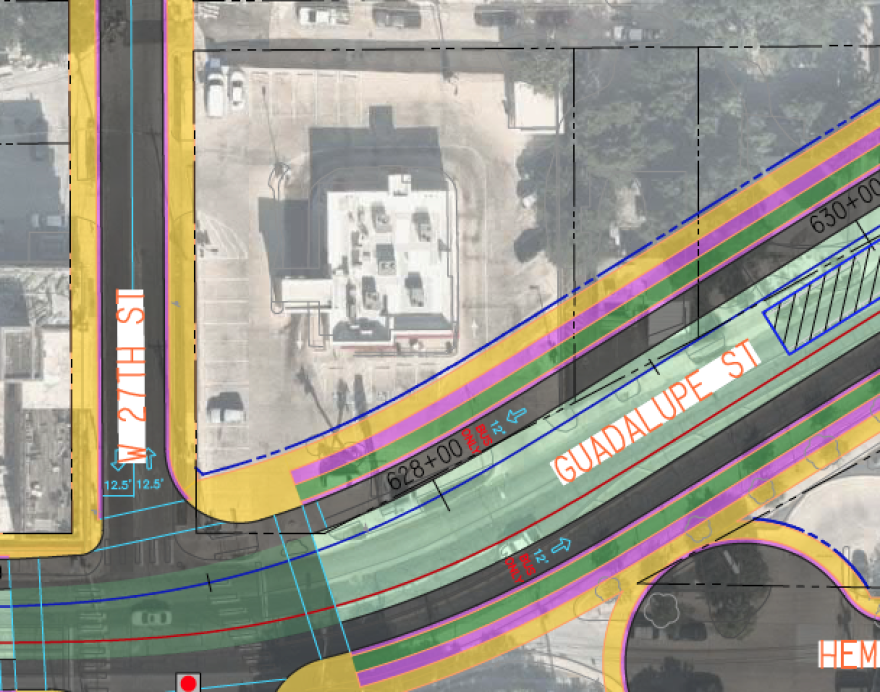
Of three burger restaurants on Guadalupe between 27th and 29th Streets, In-N-Out is the only one to escape demolition under ATP’s early design schematics.
Phoenician Resto Cafe owner Ziad Abdo said he was unaware of the plans until KUT showed him maps illustrating the changes.
“I spent so much money to build this place, and now I see this,” Abdo said. “It’s not good. I don’t like it. I really don’t.”
This would be the second time Abdo is forced to move his restaurant because of development; a location he leased in the Rainey Street area was sold to a condo developer.
“You know, it took me four years to start making money [at the Rainey location]. When I started making money, that happened,” he said.
After a year-and-a-half at the new location, Abdo says, he only recently started earning a profit.
“Losing every month thousands of dollars, now it starts getting better. And now I see this,” he said.
Why are these changes being proposed?
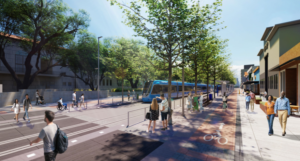
An illustration of what light-rail could look like a few blocks south on Guadalupe at 23rd Street
Austin Transit Partnership
Project Connect, the multibillion-dollar plan approved by voters in November 2020, aims to boost transit ridership by making it more frequent and pleasant. The expansion includes:
- more high-frequency bus service
- a shift to electric buses
- a new commuter rail line to Colony Park
- enhancements to the existing Red Line commuter rail service
- improved shuttle bus service
- additional zones for the on-demand service Pickup.
But the centerpiece of Project Connect — the most expensive part — is a pair of light-rail lines. The Blue Line will run from Austin-Bergstrom International Airport to Republic Square Park at Fourth and Guadalupe streets. The Orange Line from South Austin will meet up with the Blue Line at Republic Square and continue north.
Both lines will operate partially underground through 4.2 miles of tunnel, allowing them to whiz through downtown faster than the speed of traffic. The Blue Line will slip below Trinity Street after crossing a transit bridge planned for Lady Bird Lake. Under the latest designs, the Orange Line’s tunnel would start on South Congress Avenue near Live Oak Street.
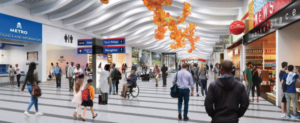
This rendering put out before the election authorizing Project Connect imagined what the subway station would look like at Republic Square Park.
Capital Metro
When transit planners were working block-by-block to carve out space for the Orange Line, they encountered challenging geometry on Guadalupe between 27th and 29th streets.
“Really, we’re kind of between a rock and a hard place,” said Peter Mullan, ATP’s chief of architecture and urban design.
The first problem was a relatively narrow street with multifamily housing on one side and commercial buildings on the other.
“Generally speaking, we make sure we’re not displacing residents,” Mullan said. “Unfortunately, that’s what put us in this situation with the other side of the street, and obviously it’s not ideal.”
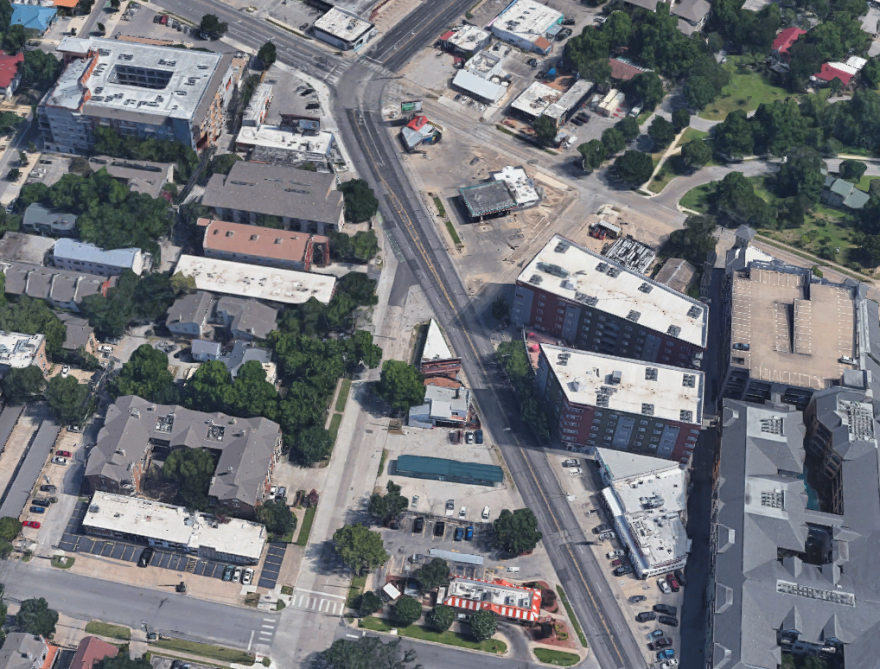
Dirty Martin’s, the triangular building with the white roof in the middle of the image, is directly across the street from the Venue on Guadalupe Apartments. ATP planners are prioritizing homes over businesses when they consider what to displace.
Google Maps
The second problem was how Guadalupe bends at 29th. Trains don’t turn as easily as cars.
“In order to make that turn gentle enough so that we can maintain certain service speeds, that’s why that curve is designed the way that it is,” Mullan said.
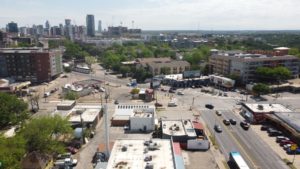
Orange Line plans call for Guadalupe Street to cut through businesses on the East side of the street near 29th.
Nathan Bernier /KUT
ATP officials acknowledge the rail tracks could be aligned along the existing road at Guadalupe, but they thought doing so would make the oddball intersection too hazardous.
“Could it do a tighter turn? It absolutely could. It also affects operational efficiency to do that,” Jerry Smiley with the engineering company AECOM said at a February meeting on the Orange Line. “It’s already a dangerous situation as it is now, and we didn’t want to add another element in the middle of that. Creating a safe environment for all modes [of transportation] was the top priority.”
Part of that plan includes turning Nueces into a two-way street connected to Guadalupe south of 29th Street. Guadalupe Street near UT, also known as the Drag, would be designed to prioritize light-rail and pedestrians.

An engineering drawing shows how Nueces would be converted to a two-way street aligned with Guadalupe.
Austin Transit Partnership
Supporters of Project Connect say they want businesses treated with empathy and respect, but ultimately, they don’t see the existing transportation system as sustainable.
“It is a difficult topic, these trade-offs. But trade-offs like these are not unique to transit; they are common challenges across all modes and manners of infrastructure,” Patrick Rose with the group Transit Forward said.
“I do think that, though, in order for us to become the sort of international city that we aspire to to be, we’ve got to move people through transit that’s muscular and accessible,” Rose said. “I think you have to do the best you can for all involved.”
Timeline unclear
It’s still too early to know when the light-rail plans will be finalized or when construction will even start. ATP needs something called a “Record of Decision” from the Federal Transit Administration early next year to get a better idea of the timing. The FTA is expected to contribute billions of dollars to Project Connect.
The Texas Constitution promises anyone whose property is seized for a public purpose “adequate compensation” — a dollar amount that is often subject to negotiation.
“I think the problem that usually comes up that causes a lot of aggravation is the uncertainty about knowing whether your property is really going to be acquired, or how much of it is going to be acquired and when it’s going to be acquired,” Robert Neblett, an eminent domain attorney, said.
Until a clearer timeline emerges, businesses in the path of the train will live with the uncertainty.
“The worst part about these deals is the wait, and you don’t even know if it’s ever even going to happen,” Nemir said. “But they’ve shackled me now, because now I can’t sell my property if I wanted to.”


